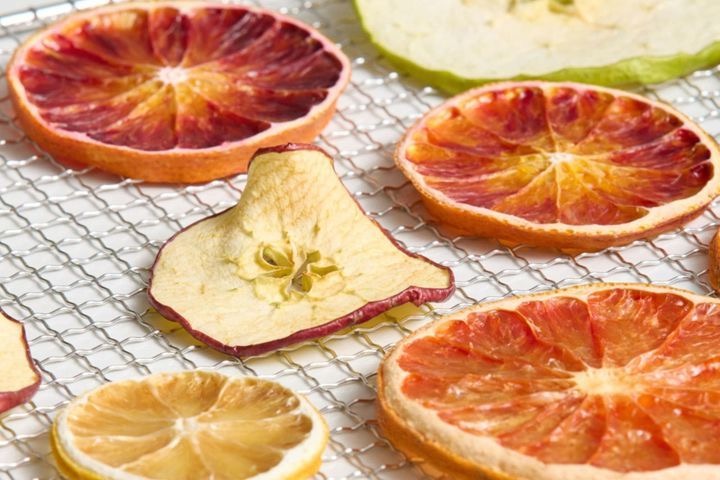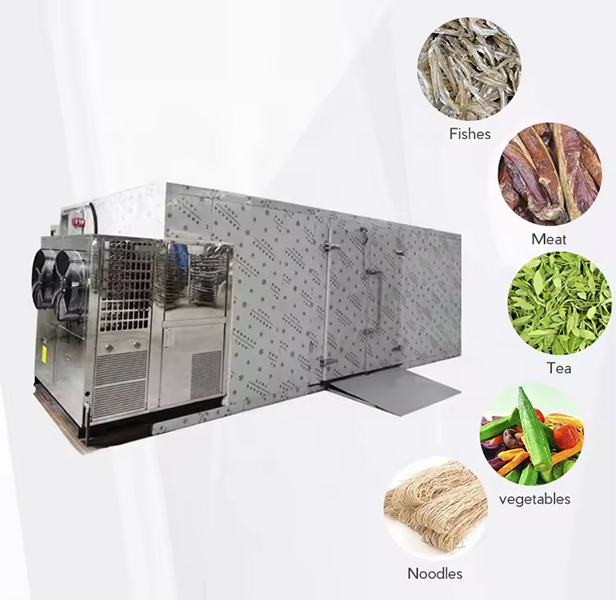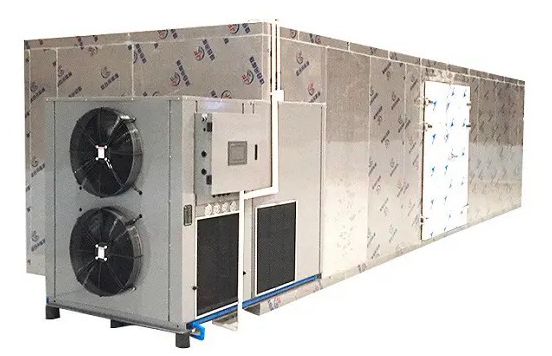
Content Menu
● Introduction to Food Drying Technologies
● Understanding Condenser Dryers
>> Key Features of Condenser Dryers:
● Understanding Heat Pump Dryers
>> Key Features of Heat Pump Dryers:
● Comparison of Condenser and Heat Pump Dryers
● Advantages of Each Technology
>> Advantages of Condenser Dryers:
>> Advantages of Heat Pump Dryers:
● Applications in Food Processing
● Choosing the Right Dryer for Your Business
● Future Trends in Food Drying Technology
● Conclusion
● FAQ
>> 1. What are the main differences between condenser dryers and heat pump dryers?
>> 2. Which dryer is better for preserving nutrients in food?
>> 3. Are condenser dryers more affordable than heat pump dryers?
>> 4. Can both types of dryers be used for all types of food?
>> 5. How do I choose between a condenser dryer and a heat pump dryer?
● Citations:
In the realm of food processing, particularly in the drying of food products, understanding the differences between various drying technologies is crucial for manufacturers and businesses. This article delves into the specifics of food dehydrators, focusing on the comparison between condenser dryers and heat pump dryers.

Introduction to Food Drying Technologies
Food drying is an ancient preservation method that reduces moisture content, thereby inhibiting microbial growth and prolonging shelf life. Today, industrial food dehydrators utilize advanced technologies to achieve efficient drying processes. Among these technologies, condenser dryers and heat pump dryers are prominent choices.
Understanding Condenser Dryers
Condenser dryers operate by heating air to high temperatures (typically between 70-75°C) and circulating it through the food items. The hot air absorbs moisture, which is then condensed into water and collected in a tank or drained away. This method is popular for its speed and effectiveness in drying various food products.
Key Features of Condenser Dryers:
- High Temperature Operation: Achieves faster drying times due to elevated temperatures.
- Moisture Collection: Water vapor is condensed and collected, allowing for easy disposal.
- Versatility: Suitable for a wide range of food products, including fruits, vegetables, and meats.
- Quick Start-Up Time: These dryers often have shorter warm-up periods, allowing for immediate use.
- Compact Design: Many models are designed to fit into smaller spaces while still providing substantial drying capacity.
Understanding Heat Pump Dryers
Heat pump dryers utilize a more energy-efficient process by employing a closed-loop heat exchange system. They operate at lower temperatures (around 50°C), which helps preserve the nutritional quality of food while still effectively removing moisture.
Key Features of Heat Pump Dryers:
- Energy Efficiency: Uses significantly less energy compared to condenser dryers, making them cost-effective in the long run.
- Gentle Drying: The lower temperature reduces the risk of damaging delicate food items.
- Moisture Recycling: The system recycles hot air, minimizing energy loss.
- Environmentally Friendly: Lower energy consumption translates to a reduced carbon footprint.
- Advanced Control Systems: Many heat pump dryers come equipped with sophisticated controls that allow for precise temperature and humidity management during the drying process.
Comparison of Condenser and Heat Pump Dryers
The following table summarizes the differences between condenser dryers and heat pump dryers:
| Feature | Condenser Dryer | Heat Pump Dryer |
| Operating Temperature | 70-75°C | 50°C |
| Energy Efficiency | Lower efficiency | Higher efficiency |
| Drying Speed | Faster drying times | Slower drying times |
| Cost of Operation | Higher operational costs | Lower operational costs |
| Product Quality | Risk of nutrient loss | Better preservation of nutrients |
| Initial Investment Cost | Generally lower | Typically higher |
| Maintenance Needs | Moderate maintenance required | Requires regular maintenance checks |
Advantages of Each Technology
Advantages of Condenser Dryers:
- Speed: Ideal for businesses requiring quick turnaround times. They are especially useful in high-demand scenarios where time is critical.
- Cost-Effective Initial Investment: Generally lower upfront costs compared to heat pump dryers, making them accessible for startups or smaller operations.
- Wider Range of Applications: Suitable for various types of food products, including those that may not require careful temperature control.

Advantages of Heat Pump Dryers:
- Energy Savings: Significant reduction in energy consumption leads to lower utility bills over time. This can result in substantial savings for large-scale operations.
- Quality Preservation: Maintains better quality in dried products due to lower drying temperatures. This is particularly important for health-conscious consumers looking for minimally processed foods.
- Longer Equipment Lifespan: The gentle drying process can lead to less wear and tear on equipment compared to high-temperature methods.
Applications in Food Processing
Both types of dryers have distinct applications in the food industry:
- Condenser Dryers are often used in large-scale operations where speed is essential, such as in commercial fruit drying or meat processing. They are particularly effective for products like apple chips or beef jerky that benefit from rapid moisture removal.
- Heat Pump Dryers, on the other hand, are preferred for high-quality dried products where nutritional value is paramount, such as in organic or health-focused food lines. They excel at preserving flavors and colors in sensitive items like herbs or berries.
Choosing the Right Dryer for Your Business
When selecting a dryer type for your business, several factors should be taken into account:
1. Product Type: Consider what types of foods you will be drying. If you are working with delicate items that require careful handling, a heat pump dryer may be more suitable. For bulkier items that need quick processing, a condenser dryer might be ideal.
2. Production Volume: Evaluate your production needs. High-volume operations may benefit from the speed of condenser dryers, while smaller operations focused on quality might prefer heat pump systems.
3. Energy Costs: Analyze your local energy costs and how they will affect your operational expenses over time. Heat pump dryers typically offer better long-term savings due to their efficiency.
4. Space Availability: Assess your facility's layout to determine which type of dryer will fit best without compromising workflow efficiency.
5. Budget Constraints: Factor in both initial investment costs and ongoing operational expenses when making your decision. While heat pump dryers may have higher upfront costs, their efficiency can lead to savings over time.
Future Trends in Food Drying Technology
As technology continues to evolve, several trends are emerging within the food drying sector:
- Smart Technology Integration: Many modern dehydrators now come with smart technology features that allow operators to monitor and control processes remotely via smartphones or tablets. This can enhance efficiency and reduce labor costs.
- Sustainability Focus: There is an increasing emphasis on environmentally friendly practices within the food industry. Manufacturers are developing more energy-efficient machines that reduce waste and carbon emissions during operation.
- Customization Options: As consumer preferences shift towards personalized nutrition, there is a growing demand for customizable drying solutions that cater to specific product requirements and consumer tastes.
Conclusion
When choosing between condenser and heat pump dryers for food processing, businesses must consider their specific needs regarding speed, energy efficiency, and product quality. While condenser dryers offer rapid drying capabilities at higher temperatures, heat pump dryers excel in energy savings and maintaining the integrity of delicate food items. Ultimately, the decision hinges on balancing initial costs with long-term operational efficiency and product quality.
As technology advances, both types of dryers will continue to evolve, offering new features that cater to changing market demands while enhancing sustainability efforts within the industry.

FAQ
1. What are the main differences between condenser dryers and heat pump dryers?
Condenser dryers operate at higher temperatures for faster drying but consume more energy. Heat pump dryers work at lower temperatures, are more energy-efficient but take longer to dry products.
2. Which dryer is better for preserving nutrients in food?
Heat pump dryers are better for preserving nutrients as they operate at lower temperatures compared to condenser dryers.
3. Are condenser dryers more affordable than heat pump dryers?
Yes, condenser dryers typically have a lower initial purchase price than heat pump dryers but may incur higher operating costs over time.
4. Can both types of dryers be used for all types of food?
Yes, both condenser and heat pump dryers can be used for various food items; however, heat pump dryers are preferable for sensitive foods that require gentle drying.
5. How do I choose between a condenser dryer and a heat pump dryer?
Consider your business's priorities—if speed is essential, go with a condenser dryer; if energy efficiency and product quality are more important, choose a heat pump dryer.
Citations:
[1] https://aradmachineryco.com/article/Food-dehydrator-buying-guide
[2] http://www.ijstr.org/final-print/jan2021/Conventional-And-Advanced-Food-drying-Technology-A-Current-Review.pdf
[3] https://www.greencentral.co.uk/heat-pumps/heat-pump-vs-condenser-dryer/
[4] https://www.beko.co.uk/support/faqs/tumble-dryers/differences-between-heat-pump-and-condenser-dryer
[5] https://aradmachineryco.com/article/How-to-use-a-dehydratormachine
[6] https://www.fox-foodprocessinginabox.eu/drying-technologies/
[7] https://www.canstarblue.com.au/appliances/heat-pump-vs-condenser-dryer/
[8] https://topone-kitchen.com/news_41.html
[9] https://www.siemens-home.bsh-group.com.hk/en/appliances/laundrycare/tumble-dryers/comparison-heat-pump-dryer-condenser-dryer
[10] https://www.coolblue.nl/en/advice/heat-pump-dryer-or-condenser-dryer.html











